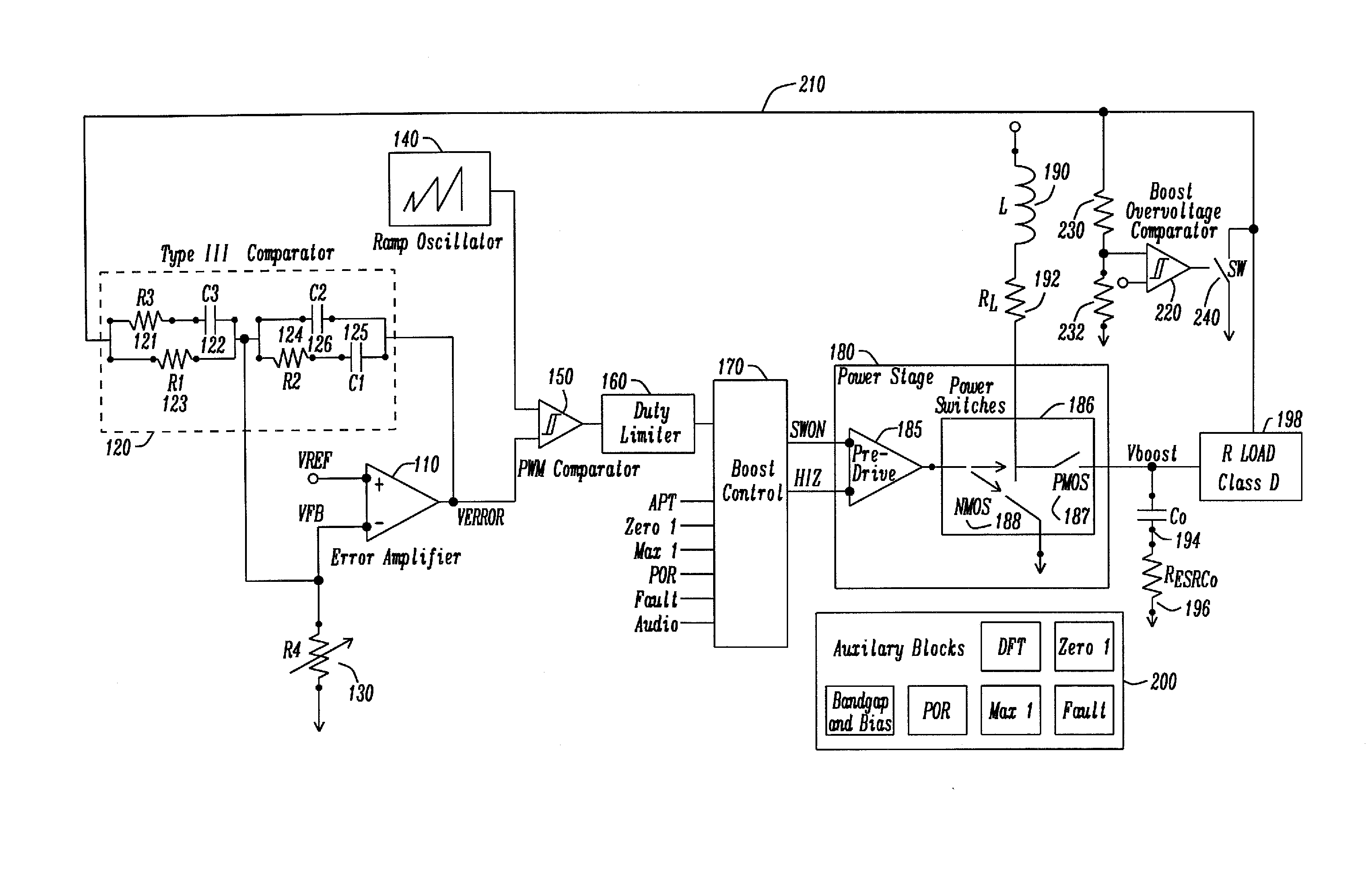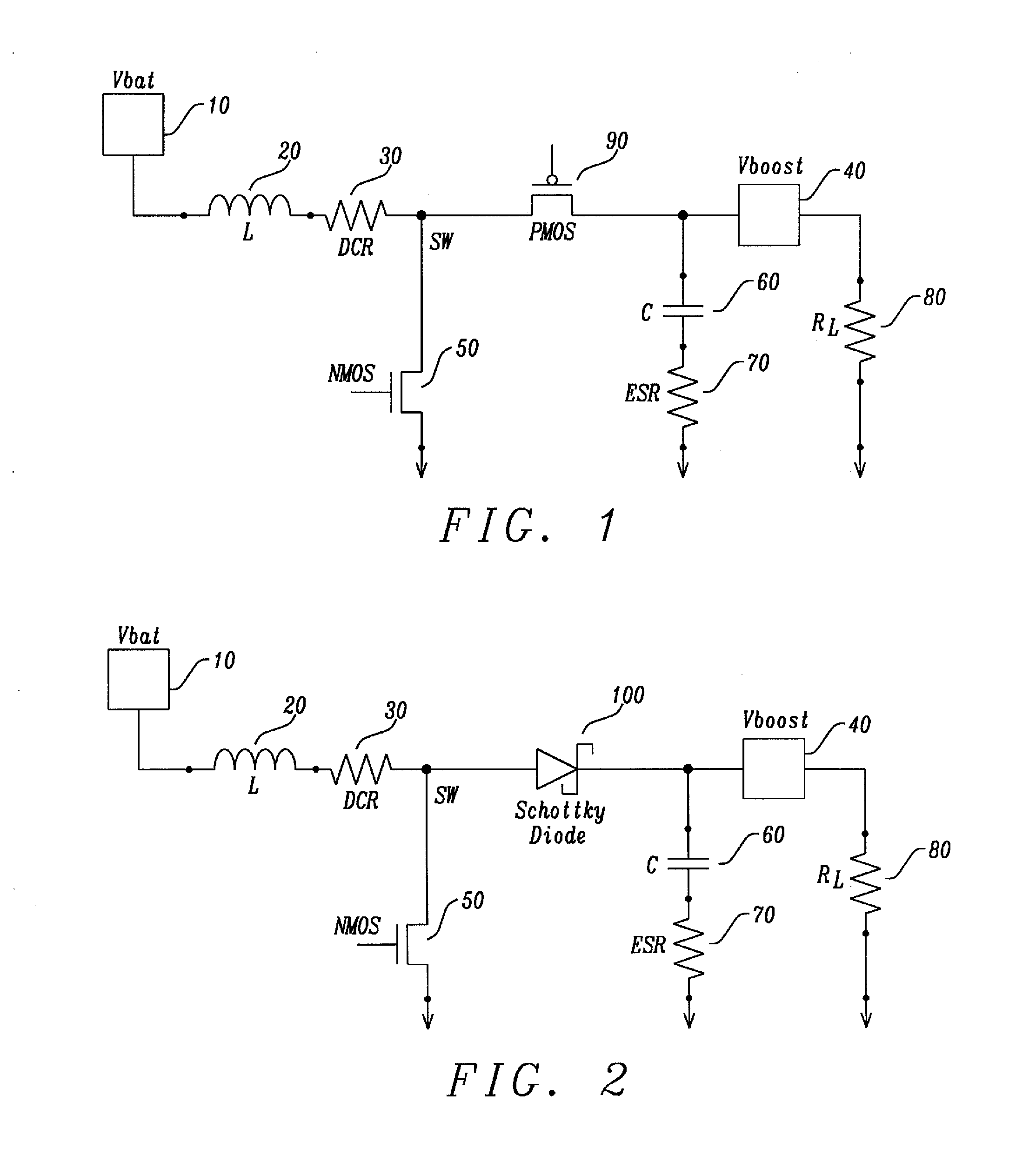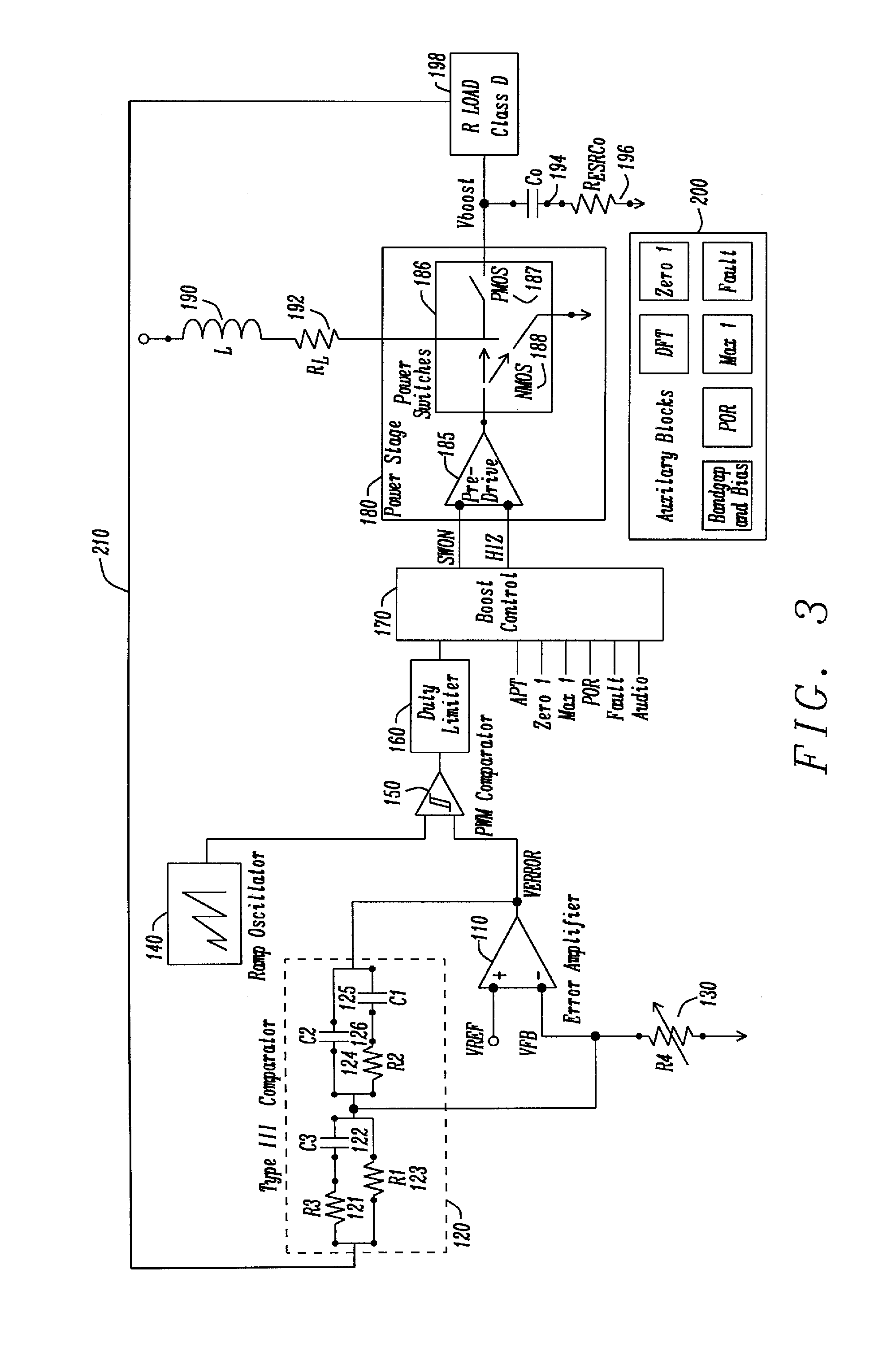Apparatus and Method for a Boost Converter with Improved Electrical Overstress (EOS) Tolerance
a technology of electrical overstress and amplifier, applied in the direction of power conversion systems, electric variable regulation, instruments, etc., can solve the problems of single component electrical overstress events, and failures that can be detected and controlled, and achieve good resilience to failures
- Summary
- Abstract
- Description
- Claims
- Application Information
AI Technical Summary
Benefits of technology
Problems solved by technology
Method used
Image
Examples
Embodiment Construction
[0038]FIG. 1 is a circuit schematic diagram illustrating a prior art embodiment of a boost converter with a p-channel MOS (PMOS) field effect switch. A first switch to the ground node to activate the current flow into the inductor L 20, where the switch is an n-channel metal oxide semiconductor (NMOS) field effect transistor device 50. The capacitor element can be represented by an ideal capacitor element 60 and its electrical series resistance (ESR) 70. A load element can be illustrated as a resistor element, RL 80. A second “switch” is illustrated in FIG. 1 in series with the inductor and the load elements, where the switch is a p-channel metal oxide semiconductor (PMOS) field effect transistor device 90. In this illustrated implementation, by utilizing a PMOS field effect transistor device, the “switching” of the transistor can be controlled at the PMOS gate electrode. In this prior art embodiment, the passive capacitor element 60 and active PMOS switch 90 can undergo electrical ...
PUM
 Login to View More
Login to View More Abstract
Description
Claims
Application Information
 Login to View More
Login to View More - R&D
- Intellectual Property
- Life Sciences
- Materials
- Tech Scout
- Unparalleled Data Quality
- Higher Quality Content
- 60% Fewer Hallucinations
Browse by: Latest US Patents, China's latest patents, Technical Efficacy Thesaurus, Application Domain, Technology Topic, Popular Technical Reports.
© 2025 PatSnap. All rights reserved.Legal|Privacy policy|Modern Slavery Act Transparency Statement|Sitemap|About US| Contact US: help@patsnap.com



